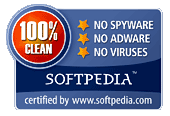
Seeing as my Ubuntu CDs had arrived, I decided to see how the Toshiba would run with it.
First problem - installation. The install routine needs over 350 meg of ram to be able to run (!). I found this hard to believe - but three hours into trying to install via the desktop shortcut on the live CD I'm forced to agree. It doesn't work.
Since I still wanted to see Ubuntu running from a proper install on the laptop I downloaded the "Alternative Install" ISO which has a text mode installer. This works fine - in fact the only long winded part of it was waiting for the files to copy. FreeSpire took around half-an-hour to install, Ubuntu has taken that long already and is still going (and this is without installing any updates).
Select and install softwarePlease wait...Well, that took some time. Over an hour for the install, and that's without any updates. But, at least it's now in and working, right?
Well, nearly.
After rebooting and logging in as my new user I received an error that the clock was probably set wrong (which was correct, I'd not got around to setting the date correctly yet, so it was showing as some time in 2000). Not to worry, there was an option to allow me to set the time. Choosing to set the time resulted in an error message that I had insufficient rights to change the clock.
At this point I was left looking at a plain orange screen. No icons, no toolbar, nothing.
Could this be Ubuntu's own "Orange screen of Death?"
One forced restart later I chose to ignore the date error and was able to log in OK.
Normally I use KDE for my desktop, so using Gnome is a new experience, but I've got to say that it isn't bad. Connecting to my wireless network was a breeze using "Network Manager" which was already running in the task bar.
Updates installed easily too, in fact installing system updates on Ubuntu is every bit as easy as on Windows, with the bonus that many of your applications can be updated too.
Watching videos was also straight forward. Connecting to my video share on my main PC, I double clicked a likely looking .AVI file which launched the Totem player, this displayed a message that it needed to look for a codec, I click Yes to install, clicked Next a couple of times and hey presto! It played back every video file I threw at it.
Adding Flash support was just as easy in FireFox as it is in Windows (you do get to choose between Adobe Flash and the GPL Gnash player, personally at the moment I'd say stick to Flash).
Adding extra programs is a doddle (as is to be expected these days) using the "Add / Remove Programs" option off the main menu.
All in all I'd say this is a mixed bag. Hardware support is good. The "Live" installer is much too bulky for what it does (350 meg memory needed just to run an installer? Oh come on!). The default desktop is good (but I still prefer KDE). Software installation and updates are as easy as you can get.
....
This was written a couple of days ago. I've stuck with Ubuntu on the Toshiba (but I've installed KDE4 as my main desktop) and I've got to say that I'm really enjoying using it.
I'm even tempted to install this on my main PC (replacing my three year old Slackware install). I'll have to see how well it handles BlitzMax before making the jump.
....
Four days later. . . .
So how well is Ubuntu standing up to regular use?
I've switched back from KDE4 to the default desktop as some of Ubuntu's features are better integrated into Gnome. Totem has remained as the media player of choice and so far has played everything that I have thrown at it.
FireFox has also impressed. Embedded video files (such as QuickTime) haven't caused any problems. More importantly YouTube videos play without any issues.
Some of the smaller touches have been really nice. For example, when trying to trace a network issue and trying to run "traceroute" from the command prompt, I received an error that the command wasn't installed, but was given full instructions on which package needed to be installed, and how to do so.






